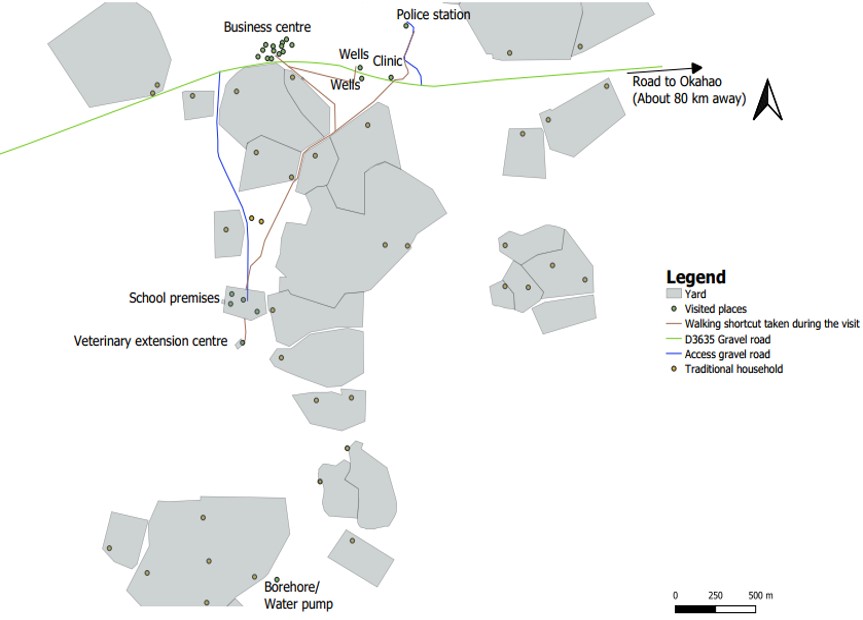PROCEED: Feasibility study for linking stand-alone solar systems completed
The settlement of Uutsathima in northern Namibia, near the border with Angola, is one of three communities being studied as part of the PROCEED interdisciplinary research project. Uutsathima is home to approximately 2,600 people, most of whom live on subsistence agriculture and a small business center that offers beverages, handmade goods and services such as cell phone recharging. In addition, the community has a health center, a school, a police station, and a veterinary station. The map shows the location of these buildings.
However, Uutsathima does not have an area-wide power supply - only a few small, isolated photovoltaic (PV) battery systems and diesel generators supply selected consumers with electricity. The technical condition of these installed PV battery systems was not known, nor was their utilization and actual usage. Such a situation can be found more and more often in rural regions in Sub-Saharan Africa: individual households and companies try to secure their own access to electricity with the help of renewable energies. However, these isolated microsystems often fail to meet actual needs while suffering from a lack of maintenance. Also, a large part of the community often remains without access to electricity. One possible solution to these problems is the creation of a superordinate mini-grid into which the previously stand-alone PV battery systems are integrated: in this way, the performance of the individual systems can be increased (increased operational reliability through more professional operation of the overall system), fluctuations can be better balanced and more households can be connected.

With this in mind, PROCEED is using the Uutsathima case study to investigate the extent to which the existing isolated solar systems in Uutsathima could be integrated into a mini-grid.
The Ingolstadt University of Technology (THI) commissioned the Namibia University of Science and Technology (NUST) with a feasibility study. The aim of this study was, on the one hand, to analyze the technical condition and utilization of the existing facilities. On the other hand, a demand-oriented mini-grid was to be designed for the settlement of Uutsathima, into which the existing, previously isolated PV battery systems could be integrated.
For more than six months, the NUST students dealt with these questions. Through field visits, measurements and surveys of the local population, they were able to collect a large amount of data and carry out energy simulations as well as initial cost calculations. The result of the study is the design of a mini-grid for the whole of Uutsathima based on photovoltaics and battery storage, in which the existing PV battery systems are integrated as decentralized producers and storage. Building on the findings of NUST, THI will engage in further elaboration of the designed energy system for Uutsathima. It is planned to publish the results of these investigations so that they can serve as a reference for similar energy supply scenarios in Sub-Saharan Africa.
